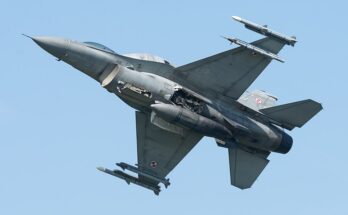by Dan Darling, International Military Markets Analyst, Forecast International.
A long-awaited contract for the Turkish Long-Range Air and Missile Defense System (T-LORAMIDS) now appears further away than ever. For a project green-lit by the Turkish government back in 2005, the ongoing inability to ink a final contract for a long-range air-missile defense solution is symptomatic of the internal/external political components involved.
As fears gathered over Iran’s missile development projects and its attempts to attain nuclear warhead breakout capability, Turkish officials began examining options for a long-range air and missile defense system that would provide protection for strategically crucial infrastructure against medium-range ballistic missiles.
By October 2005, the Turkish government had signed off on a proposal for the launch of an open competition to provide the T-LORAMIDS solution, a project that would, in turn, involve domestic industrial spin-off benefits.
Funding approval for the $1 billion-plus project was granted by Turkey’s treasury a year later.
The T-LORAMIDS competition was then launched on March 1, 2007, when the Turkish Undersecretariat for Defense Industries (SSM) first issued Requests for Information. At that time, four systems were being sought, but under a fresh Request for Proposals issued by the SSM in April 2009, the number of systems to be procured increased to 12.
Following a four-year competition initially involving four bidders (the Russian bid involving Almaz-Antey’s S-300 Favorit was the first to be eliminated from contention), Turkey made a surprise choice by selecting a Chinese offer over bids by Franco-Italian consortium Eurosam (offering the SAMP/T ASTER 30) and Lockheed Martin-Raytheon, submitting the Patriot PAC 2.
The Chinese offer of the HQ-9 (FD-2000) from China Precision Machinery Import/Export Corp (CPMIEC) elicited immediate pushback from U.S. and European NATO allies of Turkey, who feared integrating Chinese hardware and software into NATO’s own Alliance-aligned air defense network.
As a result of external pressure from its U.S. and European allies and a desire to extract better terms from CPMIEC, Turkey opened parallel negotiations with Eurosam this summer. With Turkey frustrated by an inability to nail down an agreement with CPMIEC regarding joint production and – most crucially for Ankara – technology transfer, its willingness to go back to its second- and third-place contenders was unsurprising. Whether the Eurosam and Lockheed-Raytheon teams can provide a lower-cost solution than the CPMIEC offer of $3.44 billion, however, remains a question.
Meanwhile, with parliamentary elections approaching on November 1, it is doubtful that any contract negotiations will be wrapped up before a change in the Turkish political landscape occurs. Regardless of future government make-up, the country’s highest defense decision-making body, the Defense Industry Executive Committee, is unlikely to sign off on a deal in early 2016, meaning that even if a contract is agreed to in principle, its finalization would not occur before mid-2016 at the earliest. This would mean the earliest that the first new T-LORAMIDS platform could be introduced into service with Turkish armed forces is in the early 2020s.
For its part, the Turkish military has soured on the project altogether, concerned over the cost impact of the program on its procurement budget – particularly for a purchase that would provide an insufficient number of systems to protect the whole of Turkish territory.
The best option for Turkey right now would appear to be scrapping the tender altogether and, when a new government is in place, opting for an off-the-shelf purchase that would provide an available, timely solution. But in order to quicken negotiating and delivery timelines, this would have to exclude the demands for spin-off benefits to Turkish industry that have become the norm in SSM tenders over the past decade.
For 50 years, Forecast International intelligence reports have been the aerospace and defense industry standard for accurate research, analysis, and projections. Our experienced analysts compile, evaluate, and present accurate data for decision makers. FI's market research reports offer concise analysis of individual programs and identify market opportunities. Each report includes a program overview, detailed statistics, recent developments and a competitive analysis, culminating in production forecasts spanning 10 or 15 years. Let our market intelligence reports be a key part of reducing uncertainties and mastering your specific market and its growth potential. Find out more at www.forecastinternational.com




